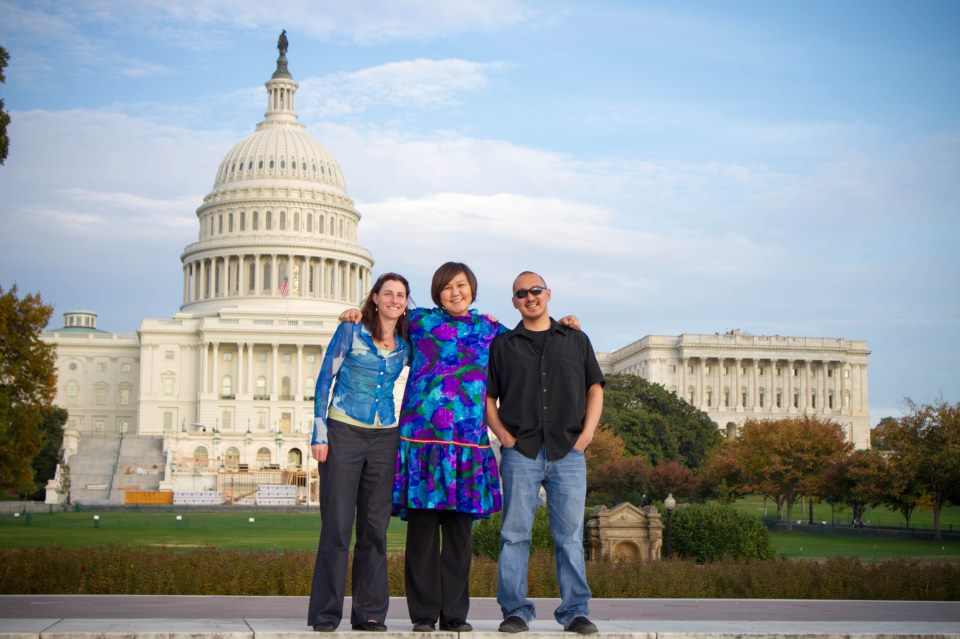In October, we were proud to host two amazing Alaska Native leaders from the North Slope, including Joseph Sage, a whaling captain from Barrow, Alaska, and Lillian Stone, a teacher from Anaktuvuk Pass. They came to Washington, DC to meet with the Obama administration and members of Congress to let them know that special areas in the National Petroleum Reserve-Alaska (Reserve) should be off limits to oil and gas leasing.
Lillian Stone shared the importance of the caribou herd to her livelihood and people. Anaktuvuk Pass, meaning the "place of caribou droppings," is slightly north of the Brooks Mountains and benefits from the caribou that begin their lives on the Arctic National Wildlife Refuge and migrate through the Reserve. Joseph Sage shared his concerns about the effects of development, the impacts to the hunters of the North Slope and the animals that they have lived off for thousands of years. He wants to pass along the subsistence lifestyle of catching and making all of his food to his children, as his people have for thousands of years. He was concerned about the increased infrastructure and traffic and what it would mean for the caribou herds in the Reserve.
In fact, the support from Alaska to protect the caribou herds has been outstanding: 30 resolutions representing 92 villages have been passed by tribal councils to call for the protections of the caribou herds' vital habitat within the National Petroleum Reserve-Alaska. The Western Arctic Herd is the largest caribou herd in Alaska and one of the largest in the world, the 2009 population is estimated at 348,000 animals. The Western Arctic Herd includes an impressive range of over 140,000 square miles in northwestern Alaska - an area larger than the state of New Mexico. The Teshekpuk Lake Herd 2008 population is estimated at about 64,100 animals. Their range covers almost an incredible one-third of Alaska - nearly the area of the state of Texas.
Today, I am hopeful that the Obama administration will listen to Lillian and Joseph, the 92 villages, and 400,000 Americans who showed their support for the National Petroleum Reserve-Alaska. I know that the Interior Department recognizes the vital role of subsistence in the Reserve, and will protect vital areas to the caribou herds for migration, calving and insect relief through the Final Integrate Activity Plan and Environmental Impact Statement for the Reserve.
We feel that administration's preferred alternative (B-2) will be a big step forward in ensuring that wildlife and subsistence uses are protected and we feel like this is the right path forward to permanently protect the wildlife and subsistence values for the Reserve for the future.
Spanning over 22 million acres across the western North Slope in the Alaskan Arctic, the Reserve is the largest single unit of public lands in the nation. The Reserve harbors rich vital wild lands and wildlife such as the Teshekpuk Lake Caribou Herd, millions of migratory birds, grizzly bears, threatened polar bears, walrus, wolves, beluga whales and more. Interior Secretary Ken Salazar called the National Petroleum Reserve-Alaska "an iconic place on our Earth" and likened it to the iconic Everglades National Park.
Alaska Wilderness League's Darcie Warden with Lillian Stone and Joseph Sage in front of the U.S. Capitol Building
